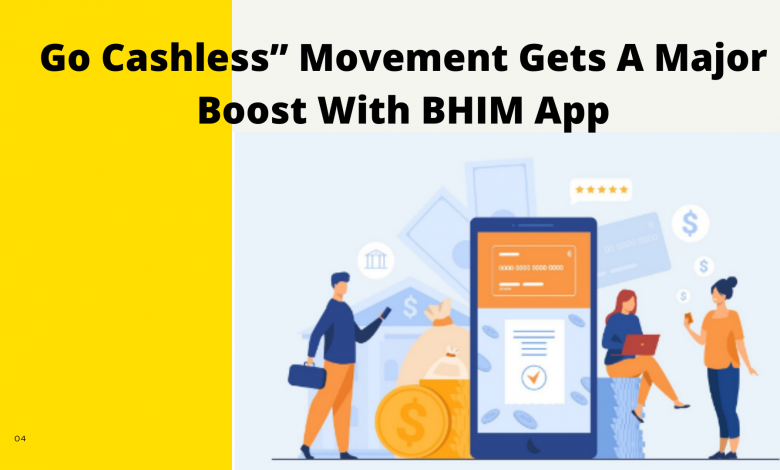Go Cashless” Movement Gets A Major Boost With BHIM App

Read on to find how the newly introduced BHIM App- The National Payment App will change India’s face of monetary transactions.
Demonetization in India was probably the boldest step taken by Honorable Prime Minister Narendra Modi in his tenure of 3 years as the PM. November 8, 2016, would always be one of the most significant dates in the Indian economy and society, given its overwhelming effects on the entire financial sector. The revolutionary move directed to curtail counterfeit or black money’s evils that are chiefly abused to fund terrorists and criminals. Along with banishing the old notes, Modi also called to go cashless and digital with the financial transactions to help tackle the flow of black money.
How does getting cashless or digital help?
Cash-dependent payments or dealings are not always easily traceable, making things smoother for black money operations. But cashless transactions through digital payments have proved to be effective in thwarting black money transactions. This is because digital financial transactions are traceable and easily taxable- thereby leaving no space for black money circulation.
Thus, a cashless economy will benefit the national economy with –
- More transparent financial transactions & money transfers
- Increment of taxation base that will further lower tax avoidance practices
- Curtailing of the black economy, which largely runs on cash
- Ease of anytime transactions through cards, PayTm, and other digital methods. No need to carry wads of cash all the time.
- More efficiency with government’s welfare programs since cashless economy helps on the easy transfer of funds to recipients
- Control on fake currency & counterfeiting
- Reduced costs on currency issuance & management
Though the sudden demonetization was overpowering for general Indian life, the shock seems to have subsided gradually. As per the market reports, digital payment transactions have catapulted 24 times from November 2016 ($15 million) to March 2017 ($359 million).
BHIM – The National Payment App
The recent surge in cashless/digital transactions is primarily due to several measures introduced by the Indian government. BHIM is the acronym for Bharat Interface for Money. It enables business owners to receive payments from clients in just seconds through the latter’s mobile phone. However, the client has to be a BHIM user as well. Digital forex customers have a tendency to be very passionate about what’s feasible the use of this new economic instrument
The app launched in 2016 December by the good PM to help with convenient payments through Android phones. As of April 2017, the app has downloaded by two crores+ Indians who regularly use it for everyday expenses. BHIM for Merchants is entirely free to use and does not charge commission or transaction fees as PayTm does.
Using BHIM is as easy as 1-2-3. First, the user would have to register with bhim.io and provide his VPA (Virtual Payment Address). If he doesn’t have one, he can ask his bank to set up his VPA free of charge. After the merchant provides his VPA, he will get his QR code. The merchant would just need to print out & post the BHIM QR code near his shop for payment using a mobile scanner. It should placed somewhere where customers will have easy access to the code. If the merchant doesn’t have a printer, bhim.io will send him the printed code to directly stick on his shop. While making the payment, the customer would need to scan the shop’s BHIM QR code on his mobile phone. The money would transferred to the merchant’s bank account directly from the consumer’s bank account in a few minutes.
Demonetization and the nudge to go cashless are being lauded by the World Bank as healthy for the Indian economy. A fast-rising digital payment scenario in the country expected to leverage the growth of the national economy to 7.6 percent in 2018.





